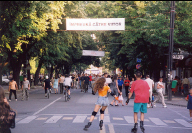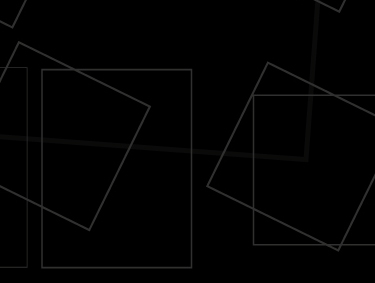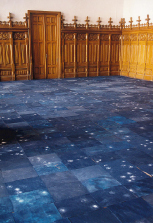From its first edition in 1997, Periferic was conceived as a contemporary
art event that "collects" marginal art attitudes or that are connected
to the relation (cultural, political, economical) center-periphery. Its appearance
in Iasi was not accidental, it coincided with the affirmation around the middle
of the 90s of a new generation of artists who wished to bring a renewal within
the means of artistic expression in a universitary city with tradition and
cultural potential, but which kept still a provincial and conservative character.
If in its first editions the festival was mainly focused on performance as
an art medium still "periphereal" in the context of Romanian visual
arts, starting with 1999 we focused more on exhibitions in new locations and
to debates on issues of contemporary art, and this helped creating a new art
scene in Iasi. Thus, step by step, we came to "put the Periferic flag"
firstly to the French and German Centers, and then we gained the wonderful
space of the Turkish Bath in Iasi and we succeeded in exhibiting also in the
official space of The Palace of Culture in Iasi. 1997-2001 was a first cycle
that launched Periferic "on the orbit", transforming it in a prestigious
regional event of contemporary art. It was a period when most of the consacrated
Romanian artists exhibited, together with young artists, for whom Periferic
was a good start for their art careers. Also, on a local ground, the event
provoked an intellectual solidarity between the young visual artists, writers
and philosophers from Iasi, the natural result being the founding in 2000
of the "Vector" Association, which became the institution organizer
of Periferic. Thus, the basis of a cultural inner structure was laid, its
purpose being the professional producing and mediating of this event. After
the 5th edition in 2001, we transformed the festival in a biennial of contemporary
art, as we wanted to give it international visibility.
The inviting for Periferic 2003 of the Swedish curator Anders Kreuger was
a premiere for the Romanian art scene. He "scanned" differently
our artistic territory and brought a plus of rigour and conceptual precision,
and made an international selection of artists. "Prophetic Corners"
was an exhibition about the way we see future in a context traditionally oriented
towards the past. The concept inspired from the writings of Walter Benjamin
gathered projects, positions and attitudes of prestigious international artists,
who "worked" with the specificity of Iasi. Looking to the future,
I think that the most important things for the success and continuity of Periferic
Biennial would be the continous "connecting" to the spirit of time
(zeitgeist) and the development of the local context.
If I was to imagine (in a positive scenario) how the city of Iasi would look
like in 10 years, in the context of a country which is in the middle of an
istoric process of assimilating (in substance and not only in form) the occidental
values, I could call this city an avanpost of the western world at its Eastern
border. This place, where at the same time a world stops and another one begins,
can become a rich place of interferences. I think this is also the point of
departure in the identitary construction of the place and particularly of
Periferic biennial.
Practically, the idea of a consulting board, formed by international personalities
would help a lot at the promotion of Periferic, and the organization in Iasi,
by the Vector Association, of a contemporary art gallery would help a lo for
the local visibility and the maturing of a local art scene.
Annika Eriksson is a very well known Swedish artist who participated at Periferic
2003. Within her project, The Future is Here, she offered to the people in
Iasi a few thousand blue badges printed with this title. It was a surprise
for us as organizers to see how many people, and especially young people,
wore this badge during the exhibition. Thinking now, a few months after it,
at the meanings of this project, it is clear to me that for a long term success
of Periferic we must trust the young people and invest in them.
Matei Bejenaru
P.S. To answer a question I was asked when invited to write this text, regarding
my double position as artist and event organizer, I'd like to tell about a
performance I had, in 1998, called "At the centre", that officially
opened Periferic 2 Festival. Then I imagined a game of soccer in two, in which
I had as partner a young professionist player. I started the game dressed
as a player and I finished it as a referee, whistling at the same time the
end of the game and the beginning of the festival. For Periferic I remained
an organizer, my art projects are left to develop outside this context.







